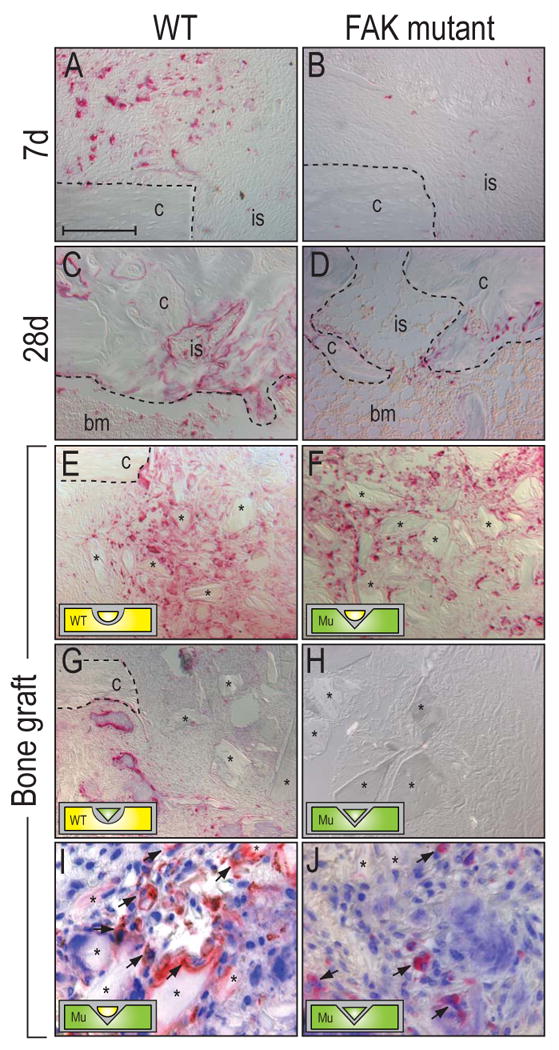Figure 6.

Defective osteoclast activity in FAK mutant mice. (A-D) TRAP staining of the injury sites in wild type (A,C) and FAK mutants (B,D) at post-surgical d7 and 28. Wild type animals showed higher TRAP activity throughout the healing process than FAK mutants. (E-F) Remodeling of bone chips [75] in wild type and FAK mutants at 7 days post-surgery. (E) Wild type bone chips in a wild type injury site. (F) Wild type bone chips in a FAK mutant. (G) FAK mutant bone chips in a wild type animal. (H) FAK mutant bone chips into a FAK mutant. Osteoclast activity in the animals that received FAK mutant bone chips did not activate bone remodeling. (I, J) Double staining of TRAP activity and nuclei in the bone grafted injury sites. (I) Wild type bone chips in a FAK mutant injury site. (J) Mutant bone chips in a FAK mutant injury site. Arrows indicate multi-nucleated osteoclasts that attached to the transplanted bone chips. bm: bone marrow, c: cortex, is: injury site. Bar: 100 μm.
